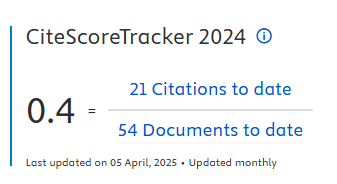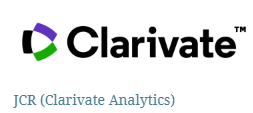Nível de colaboração e transferência de conhecimento entre atores do ecossistema de inovação: a proposição de um modelo analítico
DOI:
https://doi.org/10.5585/iji.v10i3.21057Palavras-chave:
Gestão do conhecimento, Ecossistema de inovação, Transferência de conhecimento, Nível de colaboração.Resumo
Objetivo do estudo: Este estudo teve como objetivo investigar como a colaboração entre atores do ecossistema de inovação está relacionada à transferência de conhecimento entre instituições.
Metodologia/Abordagem: As unidades de estudo foram os polos de Inovação dos Institutos Federais de Educação, Ciência e Tecnologia credenciados pela embrapii. A abordagem metodológica da pesquisa foi qualitativa; o método empregado foi o estudo de casos múltiplos; a coleta de dados foi realizada por meio de entrevistas semiestruturadas com representantes da academia, empresa, governo e sociedade; e os resultados foram obtidos por meio da análise de conteúdo.
Originalidade/Relevância: Com base nos achados desta pesquisa, foi possível elaborar um modelo analítico para relacionar o nível de colaboração e transferência de conhecimento entre os agentes do ecossistema de inovação.
Principais Resultados: Os principais resultados indicaram que a colaboração entre os atores estava relacionada à transferência de conhecimento por meio da criação e ampliação das parcerias estabelecidas, bem como a gestão dos facilitadores e dificuldades desse relacionamento.
Contribuições Teóricas/ Metodológicas: A contribuição teórica foi a proposição de um modelo analítico integrado de relações colaborativas e transferência de conhecimento entre membros do ecossistema de inovação.
Contribuições Gerenciais/ Sociais: A contribuição gerencial do estudo foi a identificação de aspectos-chave para melhorar a relação colaborativa entre os atores do ecossistema de inovação e transferência de conhecimento. a contribuição social consiste na possibilidade de expansão da colaboração e transferência de conhecimento, potencializando os fatores facilitadores e minimizando as dificuldades identificadas nos ecossistemas de inovação pesquisados.
Downloads
Referências
Adner, R. (2006). Match Your Innovation Strategy to Your Innovation Ecosystem. Harvard Business Review, 84(4), 98–107.
Adner, R. (2017). Ecosystem as Structure. Journal of Management, 43(1), 39–58. https://doi.org/10.1177/0149206316678451
Alexander, A. T., & Martin, D. P. (2013). Intermediaries for open innovation: A competence-based comparison of knowledge transfer offices practices. Technological Forecasting and Social Change, 80(1), 38–49. https://doi.org/10.1016/j.techfore.2012.07.013
Alexander, A. T., Miller, K., & Fielding, S. (2015). Open for business: Universities, entrepreneurial academics and open innovation. International Journal of Innovation Management, 19(6), 1–21. https://doi.org/10.1142/S1363919615400137
Alhassan, E., Schillo, R. S., Lemay, M. A., & Pries, F. (2019). Research Outputs as Vehicles of Knowledge Exchange in a Quintuple Helix Context: The Case of Biofuels Research Outputs. Journal of the Knowledge Economy, 10(3), 958–973. https://doi.org/10.1007/s13132-017-0507-8
Amatucci, M. (2000). Perfil do administrador brasileiro para o século XXI: um enfoque metodológico [Universidade de São Paulo]. https://doi.org/10.11606/T.12.2000.tde-08112010-174044
Baaziz, A. (2018). Towards a new paradigm of “coopetitiveness” in emerging countries: Case of the Algerian Entrepreneurial Ecosystems. International Journal of Innovation, 7(1), 67–86. https://doi.org/10.5585/iji.v7i1.354
Bacon, E., Williams, M. D., & Davies, G. H. (2019). Recipes for success: Conditions for knowledge transfer across open innovation ecosystems. International Journal of Information Management, 49, 377–387. https://doi.org/10.1016/j.ijinfomgt.2019.07.012
BRASIL - Ministério da Educação – MEC. (2019). Portal da Rede Federal de Educação Profissional Científica e Tecnológica. http://portal.mec.gov.br/rede-federal-inicial/
Bush, V. (1945). Science the Endless Frontier: A Report to the President by Vannevar Bush. US Government Printing.
Carayannis E. G.; Barth T. D.; Campbell D. F. G. (2012). The Quintuple Helix innovation model: global warming as a challenge and driver for innovation. Journal of Innovation and Entrepreneurship.
Carayannis, E. G., & Campbell, D. F. J. (2010). Triple Helix, Quadruple Helix and Quintuple Helix and How Do Knowledge, Innovation and the Environment Relate To Each Other? International Journal of Social Ecology and Sustainable Development, 1(1), 41–69. https://doi.org/10.4018/jsesd.2010010105
Carayannis, E. G., Campbell, D. F. J., & Grigoroudis, E. (2021). Helix Trilogy: the Triple, Quadruple, and Quintuple Innovation Helices from a Theory, Policy, and Practice Set of Perspectives. Journal of the Knowledge Economy. https://doi.org/10.1007/s13132-021-00813-x
Carayannis, E. G., Grigoroudis, E., Campbell, D. F. J., Meissner, D., & Stamati, D. (2018). The ecosystem as helix: an exploratory theory-building study of regional co-opetitive entrepreneurial ecosystems as Quadruple/Quintuple Helix Innovation Models. R and D Management, 48(1), 148–162. https://doi.org/10.1111/radm.12300
Carayannis, E. G., & Rakhmatullin, R. (2014). The Quadruple/Quintuple Innovation Helixes and Smart Specialisation Strategies for Sustainable and Inclusive Growth in Europe and Beyond. Journal of the Knowledge Economy, 5(2), 212–239. https://doi.org/10.1007/s13132-014-0185-8
Carayannis, E., & Grigoroudis, E. (2016). Quadruple Innovation Helix and Smart Specialization: Knowledge Production and National Competitiveness. Foresight and STI Governance, 10(1), 31–42. https://doi.org/10.17323/1995-459x.2016.1.31.42
Carayannis, E.G. and Campbell, D. F. J. (2006). Knowledge Creation, Diffusion, and Use in Innovation Networks and Knowledge Clusters. A Comparative Systems Approach across the United States, Europe and Asia. Praeger.
Carayannis, E.G. & Campbell, D. F. J. (2009). ‘“Mode 3” and “Quadruple Helix”: toward a 21st century fractal innovation ecosystem.’ J. Technology Management, 46(3/4), 201–234.
Ceccagnoli, Forman, Huang, & Wu. (2012). Cocreation of Value in a Platform Ecosystem! The Case of Enterprise Software. MIS Quarterly, 36(1), 263. https://doi.org/10.2307/41410417
Chesbrough, henry W. (2003). Open innovation: the new imperative for creating and profiting from technology. Havard Business School Press.
Clinton, M. S., Merritt, K. L., & Murray, S. R. (2009). Using Corporate Universities to Failitate Knowledge Transfer and Achieve Competitive Advantage. International Journal of Knowledge Management, 5(4), 43–59. https://doi.org/10.4018/jkm.2009062903
Cunningham, J. A., & O’Reilly, P. (2018). Macro, meso and micro perspectives of technology transfer. Journal of Technology Transfer, 43(3), 545–557. https://doi.org/10.1007/s10961-018-9658-4
Del Giudice, M., Carayannis, E. G., & Maggioni, V. (2017). Global knowledge intensive enterprises and international technology transfer: emerging perspectives from a quadruple helix environment. Journal of Technology Transfer, 42(2), 229–235. https://doi.org/10.1007/s10961-016-9496-1
Dell’Ano, D.; DEL GIUDICE, M. (2015). Absorptive and desorptive capacity of actors within university-industry relations: does technology transfer mater? Journal of Innovation and Entrepreneurship, 4(13).
D’Este, P., Guy, F., & Iammarino, S. (2013). Shaping the formation of university-industry research collaborations: what type of proximity does really matter? Journal of Economic Geography, 13(4), 537–558. https://doi.org/10.1093/jeg/lbs010
EMBRAPII. (2019). Empresa Brasileira de Pesquisa e Inovação Industrial. https://embrapii.org.br
Etzkowitz, H. (2003). Innovation in innovation: The Triple Helix of university-industry government relations. Social Science Information, 42(3), 293–337.
Etzkowitz, H. (2008). Triple Helix Innovation: Industry, University, and Government in Action. Routledge.
Etzkowitz, H., & Zhou, C. (2017). Hélice Tríplice: inovação e empreendedorismo universidade-indústria-governo. Estudos Avançados, 31(90), 23–48. https://doi.org/10.1590/s0103-40142017.3190003
Freeman, C. (1987). Technology, Policy, and Economic Performance: Lessons from Japan. Pinter Publishers.
Galvao, A., Mascarenhas, C., Marques, C., Ferreira, J., & Ratten, V. (2019). Triple helix and its evolution: a systematic literature review. Journal of Science and Technology Policy Management, 10(3), 812–833. https://doi.org/10.1108/JSTPM-10-2018-0103
Gomes, L. A. de V., Facin, A. L. F., Salerno, M. S., & Ikenami, R. K. (2018). Unpacking the innovation ecosystem construct: Evolution, gaps and trends. Technological Forecasting and Social Change, 136, 30–48. https://doi.org/10.1016/j.techfore.2016.11.009
Granstrand, O., & Holgersson, M. (2020). Innovation ecosystems: A conceptual review and a new definition. Technovation, 90–91, 102098. https://doi.org/10.1016/j.technovation.2019.102098
Jacobides, M. G., Cennamo, C., & Gawer, A. (2018). Towards a theory of ecosystems. Strategic Management Journal, 39(8), 2255–2276. https://doi.org/10.1002/smj.2904
Leydesdorff, L., & Etzkowitz, H. (2003). Can ‘the public’ be considered as a fourth helix in university-industry-government relations? Science and Public Policy, 30(1), 55–61.
Leydesdorff, L., & Meyer, M. (2006). Triple Helix indicators of knowledge-based innovation systems. Introduction to the special issue. Research Policy, 35(1), 1441–1449.
Leydesdorff, Loet; Etzkowitz, H. (1998). The Triple Helix as a model for innovation studies. Science and Public Policy, 25(3), 195–203. https://doi.org/10.1093/spp/25.3.195
Maietta, O. W. (2015). Determinants of university–firm R&D collaboration and its impact on innovation: A perspective from a low-tech industry. Research Policy, 44(7), 1341–1359. https://doi.org/10.1016/j.respol.2015.03.006
Meng, D., Li, X., & Rong, K. (2019). Industry-to-university knowledge transfer in ecosystem-based academic entrepreneurship: Case study of automotive dynamics & control group in Tsinghua University. Technological Forecasting and Social Change, 141, 249–262. https://doi.org/10.1016/j.techfore.2018.10.005
Milagres, R., & Burcharth, A. (2019). Knowledge transfer in interorganizational partnerships: what do we know? Business Process Management Journal, 25(1), 27–68. https://doi.org/10.1108/BPMJ-06-2017-0175
Miller, K., McAdam, M., & McAdam, R. (2014). The changing university business model: a stakeholder perspective. R&D Management, 44(3), 265–287. https://doi.org/10.1111/radm.12064
Miller, K., McAdam, R., Moffett, S., Alexander, A., & Puthusserry, P. (2016). Knowledge transfer in university quadruple helix ecosystems: an absorptive capacity perspective. R&D Management, 46(2), 383–399. https://doi.org/10.1111/radm.12182
Minayo, M. C. S. (2012). Análise qualitativa: teoria, passos e fidedignidade. Ciência & Saúde Coletiva, 17(3), 621–626.
Mineiro, A. A. da C., Souza, D. L., Vieira, K. C., Castro, C. C., & Brito, M. J. de. (2018). Da hélice tríplice a quíntupla: uma revisão sistemática. Revista Economia & Gestão, 18(51), 77–93.
Munshi Naser Ibne Afzal, Datuk Dr Kasim Bin HJ. MD. Mansur, Shamim Siddiqui, J. G. (2018). A panel investigation of the triple helix (TH), quadruple helix (QH) relationship in ASEAN-5 economies. Journal of Innovation Economics & Management, 27(3), 97–122.
Nonaka, I., & Takeuchi, H. (1995). The knowledge creating company: How Japanese companies create the dynamics of innovation. Oxford University Press.
Nonaka, I., Toyama, R., & Hirata, T. (2008). Managing flow: A process theory of the knowledge-based firm. Palgrave Macmillan.
Oliva, F. L. (2014). Knowledge management barriers, practices and maturity model. Journal of Knowledge Management, 18(6), 1053–1074. https://doi.org/10.1108/JKM-03-2014-0080
Perkmann, M and Walsh, K. (2008). Engaging the scholar: Three types of academic consulting and their impact on universities and industry. Research Policy.
Piirainen, T; Arnkil, R; Järvensivu, A; Koski, P. (2010). Exploring Quadruple Helix Outlining user-oriented innovation models. Tampereen yliopistopaino Oy Juvenes Print.
Popadiuk, S., & Choo, C. W. (2006). Innovation and knowledge creation: How are these concepts related? International Journal of Information Management, 26(4), 302–312. https://doi.org/10.1016/j.ijinfomgt.2006.03.011
Sábato, J.; Botana, N. (1968). La ciencia y la tecnología en el desarrollo futuro de América Latina. Revista de La Integración, 1, 15–36.
Schartinger, D., Rammer, C., Fischer, M. M., & Fröhlich, J. (2002). Knowledge interactions between universities and industry in Austria: sectoral patterns and determinants. Research Policy, 31(3), 303–328. https://doi.org/10.1016/S0048-7333(01)00111-1
Schoonmaker M G; Carayannis E G. (2013). Mode 3: A Proposed Classification Scheme for the Knowledge Economy and Society. Journal of the Knowledge Economy, 4(4), 556–577.
Secundo, G., Toma, A., Schiuma, G., & Passiante, G. (2019). Knowledge transfer in open innovation. Business Process Management Journal, 25(1), 144–163. https://doi.org/10.1108/BPMJ-06-2017-0173
Teece, D. J. (2007). Explicating dynamic capabilities: the nature and microfoundations of (sustainable) enterprise performance. Strategic Management Journal, 28(13), 1319–1350. https://doi.org/10.1002/smj.640
Uzzi, B. (1997). Social Structure and Competition in Interfirm Networks: The Paradox of Embeddedness. Administrative Science Quarterly, 42(1), 35. https://doi.org/10.2307/2393808
Williamson, O. E. (1985). The Economic Institutions of Capitalism. Free Press.
Yin, R. K. (2001). Estudo de caso: planejamento e métodos (2a). Bookman.
Downloads
Publicado
Como Citar
Edição
Seção
Licença
Copyright (c) 2022 International Journal of Innovation – IJI

Este trabalho está licenciado sob uma licença Creative Commons Attribution-NonCommercial-ShareAlike 4.0 International License.
- Resumo 436
- PDF (English) 402













